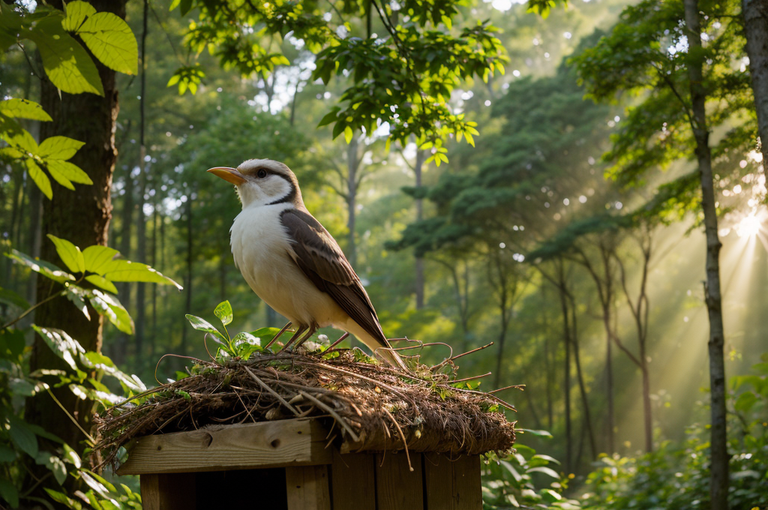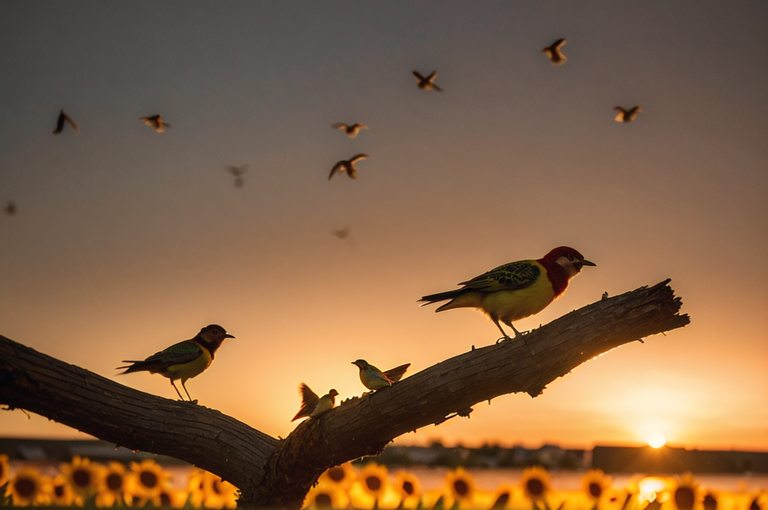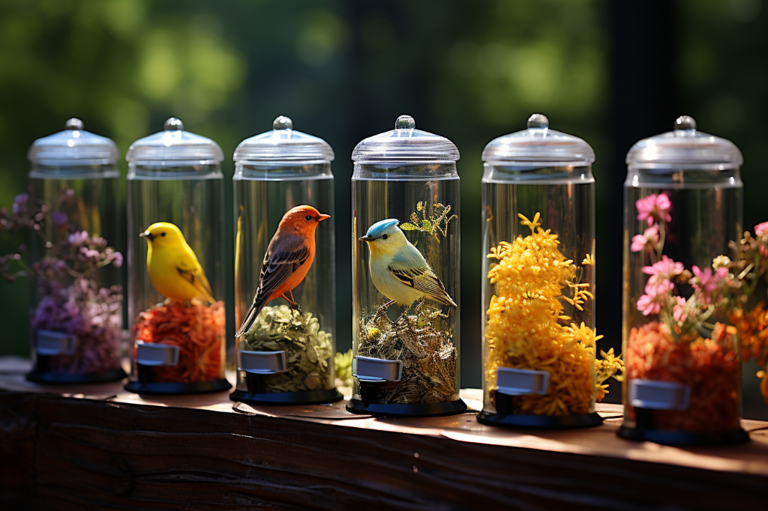Guide to Bird Feeding: Seed Types, Placement, and Year-round Care

This article covers topics like different bird seed types, seasonal feeding, feeder placement and cleanliness, water supply, the dangers of human food, bird feeding impact, window collisions, spicy foods for birds, and suet cakes.
Understanding Bird Seed Types
I often find myself captivated by the diverse crowd of avian guests visiting my backyard sanctuary. Ask me the secret to attracting such a lively kaleidoscope of feathers, and I’ll direct you towards the bird feeders. Just like us humans, our bird friends too, have their preferences when it comes to edible delights. Unless, of course, when it comes to the best food for wild birds, that’s a universal crowd pleaser. 🐦
Overview of Different Bird Seed Types
Pulling back the emerald curtain of bird seed bags, you find a world of culinary diversity. Each seed type, like the delectable black oil sunflower seed and the tiny yet popular nyjer seed, tantalizes a different tribe of our feathery friends. One important thing to remember: catering to your neighborhood bird species’ preferences is the key to hosting a spectacular show with overflowing chirping boxes. 🌻
Importance of Individual Bird Seed Species
Many times, I find the subtle charm of individual bird seed species alluring. It lures specific bird species, allowing you to witness their unique beauty from close quarters. Each seed type, like an invisible thread, pulls particular species into your yard. Understanding which songster prefers what is the key to a titillating bird watching experience. 🎼
The Benefits of Mixed Bird Seeds
Alternatively, one might want to host a rather diverse birdie carnival. In that case, I’d recommend mixed bird seeds. This bird feast not only attracts a variety of species but also ignites a brilliant birdie social gathering right in your backyard. Remember, diversity is the essence of nature, and mixed seeds give you a front row seat to this spectacular performance. 🥳
So, whether you’re a seasoned birder or an occasional admirer, cultivating an understanding of bird seed types can noticeably enhance your avian encounters. After all, understanding the tune to which nature dances is what truly gets you invited to the woodland waltz.

Seasonal Adjustments in Bird Feeding
As an ornithologist and an avid bird enthusiast, I can’t emphasize enough the importance of adjusting bird feeding habits seasonally. 🧭 When the temperature takes a drastic plunge or a great climb, or during migration periods, birds become more reliant on artificial feeding.
Just as we humans swap out our wardrobes in preparation for the changing seasons, bird parents should also take note of the need to adjust the contents of their bird feeders. A slight adjustment like adding in extra fatty seeds during harsh winters and the best birdseed for wild birds during migration periods can make a big difference to our avian friends.
The Importance of Adjusting Bird Feeding Habits Seasonally
The earth’s cyclical dance around the sun brings along significant changes in the ecosystems, hitting the pause button on certain food sources, and starting a feast elsewhere. 🌍 The birds are not immune to these fluctuations. Tailoring your bird feeding habits to these changes can extend a lifeline to them, providing them sustenance when their natural food sources are wanting.
Bird’s Reliance on Artificial Feeding During Different Seasons
Picture the scorching heat of the summer or the freezing grasp of the winter. 🌞❄️ The extreme temperatures curtail the availability of natural food, forcing the birds to look elsewhere. That’s when bird feeders equipped with nutrient filled birdseed can harbor them from the storm of hunger, keeping them energized and healthy.
Role of Bird Feeding in late winter and early spring
Late winter and early spring this period stretches like a long, hungry sigh for the birds. It is a time when natural food sources are scarce, and their metabolic needs are sky high. By dutifully stocking your bird feeders with the best birdseed for wild birds, 🐦 we offer a helping hand to these vibrant living jewels of nature, bridging them over until the resurgence of lush spring bounty.
So, dear bird parents arm yourself with an assortment of birdseeds, prepare your feeding stations, and join me in this beautiful labor of love. Together, we can weather any season side by side with our avian friends.

Feeding Equipment and Placement
Balancing on the precipice of dawn, misty eyed and wild about birds, I often dwell on the best ways to attract and protect our feathered friends. An integral part of this is the placement and upkeep of bird feeders.
The Necessary Considerations for Bird Feeder Placement
Bird feeders should be positioned at least 12 feet from a safe cover, like a tree or a shrub, to prevent predators from launching ambuscades. It’s like setting them up in their own safe little borough amidst the sprawling wilderness.
The Importance of Maintaining the Cleanliness of Bird Feeders
Like we enjoy a clean and inviting meal place, cleanliness of bird feeders is fundamental in making this refuge hospitable. Regular cleaning, preferably every fortnight, not only reinforces an inviting environment for birds but also prevents the spread of diseases. After all, these feeders are communal spaces attracting a medley of species, and one germ can bring a whirlwind of repercussions.
Tips for Protecting Birds Against Predators
Lastly, protection against predators is pivotal in our endeavor to welcome birds to our backyards. A cleverly positioned feeder can serve as the first line of defense, allowing for quick escapes into safe cover if needed. To the untrained eye, it’s a mere placement, but for our little airborne wards, it’s a thoughtful shield.
With this, we create a haven that respects the habits of birds, embraces their needs and shields them from potential harm. We become their watchful guardians, cloaked in the shadows, the silent allies in their daily forays for sustenance.

Providing Water Supply and Ensuring Safe Feedings
As an ornithologist, I cannot stress enough the importance of providing clean water for our feathered friends all year round. Like us, birds rely heavily on water for survival. I’ve seen how a reliable and clean water source in my backyard attracts a variety of birds, transforming the entire space into a vibrant, chattering symphony.
The Importance of a Year-round Clean Water Source
Here’s the thing. Water isn’t just for quenching thirst. Birds use it for bathing to keep their feather in tip top condition as well. They have this endearing routine of dunking and flapping, which I feel often symbolizes the sheer joy of life.
Dangers of Feeding Birds Human Food
I often marvel at their individual feeding patterns, but here’s a cautionary note. Care ought to be taken while feeding them. Leftover human food or even low quality seeds can be harmful to birds. You may think that splitting a piece of your morning toast with a lingering sparrow is an act of kindness, but it could unintentionally be detrimental to its health. The best dried fruit for wild birds is unsweetened and without preservatives – a tiny offering that can make a big difference.
Strategies for Preventing Window Collisions
And then there’s the issue of window collisions, which can be catastrophic for these little beings. Placing feeders more than 30 feet from a window or closer than 3 feet can minimize this risk. This consideration will not only ensure their feeding safety, but it will also guarantee many mornings of harmonious birdsong.
Taking care of birds, our co inhabitants of the planet, isn’t as complicated as it might seem. A carefully curated habitat and an abundance of empathy can bridge the divide between our lives and theirs.
Additional Bird Feeding Considerations
As an ornithologist and a passionate bird lover, I can’t help but highlight the importance of understanding their feeding habits and unique dietary needs. One such essential factor is understanding the impact of habitual feeding on their behavior.
Impacts of Habitual Bird Feeding on Bird Behavior
My dawn to dusk observations reveal the complexities of wild birds. I’ve noticed that continual feeding disrupts their migration patterns and even unbalances bird populations, often leading me to ponder the best food for wild birds. We mustn’t lose sight of the fact that we’re all part of this intricate tapestry of life, each with a role to play.
The Intriguing Implications of Spicy Food for Birds
One of my distinctive quirks is feeding birds spicy food. I have to be wild about birds to try such an experiment, right? But here’s the fascinating part birds can handle spicy food without flinching, unaware of the fiery taste. Meanwhile, spicy dishes are a potent deterrent for pesky squirrels, ensuring that the best birdseed for wild birds finds its rightful consumers.
The Role of Suet Cakes in Bird Feeding
Turns out, not all ’human’ food is unfit for my feathery friends. Suet cakes, primarily composed of beef fat, offer high nutrition, particularly beneficial during harsh winters. Oh, the simple joy of watching a flock hovering around a suet cake! It’s one thing to read or hear about it and quite another to relish these sights firsthand. The best dried fruit for wild birds, when mixed with suet, makes for a wholesome and nutritious meal, adding a dash of colour to the otherwise drab winter landscape.
In the end, it’s not just about feeding. It’s about creating a safe space where the avian life can thrive and take flight, adding layers of enchanting beauty to our shared world. Let’s cater to their needs and appreciate their unique strengths; after all, every bird carries a piece of the sky. It’s high time we offered more than just crumbs of admiration.


